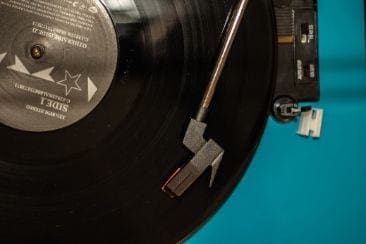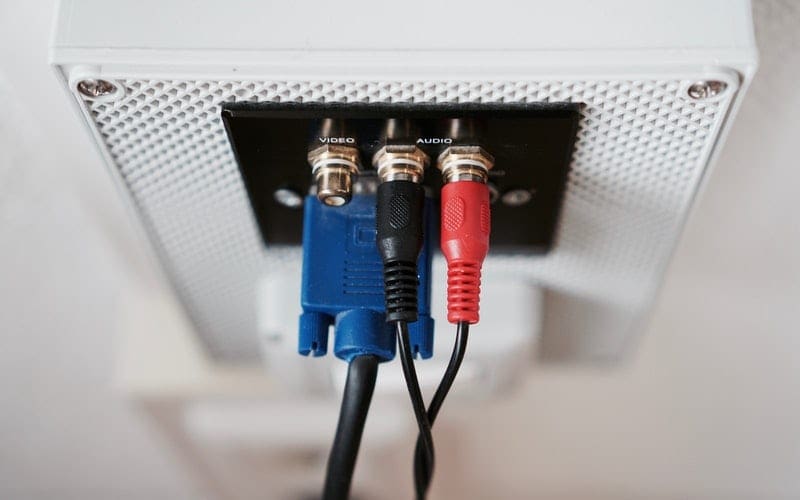
Audio Cables – How To Use Them & Where Best To Buy Them
Audio cables have the power to record the crisp and loud sound that you are after, from a variety of instruments.
We know that audio cables might not be the most interesting thing to read about (or hey, maybe they are for some!) but they are such an important piece of equipment for your studio.
The good news is that we have done all of the research for you! This article will cover the basics from the definition of audio cables down to what length is best.
What Are Audio Cables?
Put simply, audio cables (such as speaker wire) are used to connect and transfer signals from an audio source over to another piece of equipment, such as a powered monitor or an amplifier.
A commonly asked question that needs to be answered is:
What’s the difference between analogue cables and digital optical cables?
The difference lies in the way that they transmit audio information. Digital cables transmit digital information in 1’s and 0’s, otherwise known as binary code. While analog cables operate by transmitting electrical audio signals.
Another important question to answer in terms of analog cables is: what’s the difference between unbalanced and balanced cables? Unbalanced cables are comprised of a ground wire and a conductor wire, and they are more likely to pick up unwanted noise and interference.
However balanced cables can cancel out these unwanted interferences by using an extra conductor wire.
Balanced vs. Unbalanced cables
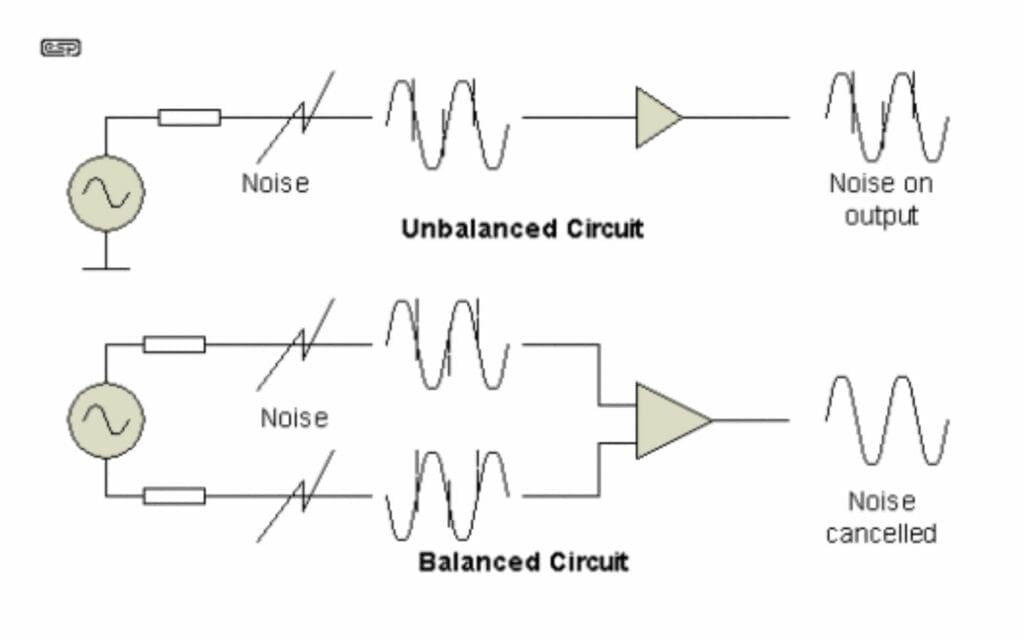
Prior to delving into the distinct kinds of audio cables at your disposal and their respective functions, it is crucial to clarify a significant term: balance. There are two types of analog cables, namely balanced and unbalanced cables. Knowing whether balance will impact the audio you hear is crucial, as certain circumstances call for it, while others may not require it.
To prevent external electrical interference, a balanced cable incorporates an extra conductor wire within the cable. A pair of conductor wires and a ground are present in balanced cables, while unbalanced cables only have a single conductor wire and a ground. The paired conductor wires within a balanced cable collaborate to eliminate any external electrical interference that may disrupt or impact the signal, thereby compromising the audio data transmitted through the cable.
For home users, the majority of mainstream cables are unbalanced since attaining the highest level of audio clarity is not a top priority unlike in professional environments. ables intended for audio production or professional duties are commonly balanced to avoid signal deterioration. Nevertheless, some particular situations still exist where this is not applicable.
What Are The Different Types Of Audio Cables You Need For A Studio Set Up?
There are definitely certain types of audio cables that you can’t be without in your studio setup. First up, let’s take a closer look at the world of digital audio cables as these are much simpler to use and understand.
There are lots of digital cables out there, with more and more being released into the market. One thing we would advise, except for Cat5e Cables, is to try and keep your audio cables short.
Keeping them under roughly seven meters long is ideal, as this way you can guarantee their quality and efficiency.
Interface Cables
Your studio is simply not complete without interface cables that connect to your computer. Thunderbolt is the latest technology and this is reflected in its price, however, if it is unparalleled data transfer rates you are after then this is the best option.
Take the Universal Audio Apollo X4 Thunderbolt 3 Audio Interface, for example. It has everything you could possibly need, from four Unison mic preamps down to eight channels of additional digital input and output.
Its audio interface is compatible with your Mac and Windows devices and also boasts an outstanding A/D and D/A conversion. Premium quality comes at a premium price, as its street price is set at £1,599.
FireWire is also a popular model, as it offers faster speeds than other models out there, like USB, as well as audio-video transfer. The FireWire 400 model can transfer 100, 200, or 400 Megabits per second, as well as being able to join with other essential devices like hubs and repeaters.
Their length is ideal at 4.5m, which ensures pro audio. One great place to buy this model is Amazon for both the UK and the USA.
However, USB shouldn’t be overlooked, as although it has a slow data transfer, it will work for home audio and those on a budget.
Midi Cables

Midi cables, otherwise known as Musical Instrument Digital Interface, are utilized to communicate different types of musical information (like notes) to other digital devices. They transfer data. This is particularly useful for you electronic musicians out there, as they allow you to transfer midi cable data directly to your computer.
A great choice of Midi Cable is the iConnectivity Mio MIDI Interface. It’s compatible with both Windows and Mac systems, suiting both your home studio and workplace. It’s got a reputation as having one of the fastest signal transmissions, and it also boasts a fantastic low-latency system. All of this results in no interference or unwanted sound transference.
Its design is superb in terms of durability, and the five-foot length is ideal for pro audio. A great place to buy this cable is from Amazon for both the UK and the USA, with the price standing at around £30.00.
Cat5e Cables
You might recognize this cable as being the type that is used for your home phone, and you’d be right! However, they are also great digital audio cables to have in your studio.
All you need is one line of cable to transport multiple channels of digital audio, some can even transport up to 40 channels of audio. It also acts as a power source and is long with very low latency times.
There’s such a wide variety of Cat5e cables out there; a great website to check out is Thomann as they sell a variety of music equipment. They deliver to both the UK and the USA.
One cable that has a high rating is the Pro Snake Cat5e Cable, as it is 30m in length and is extremely robust, made up of an RJ 45 plug on both ends. The price begins at £42.
BNC Cables
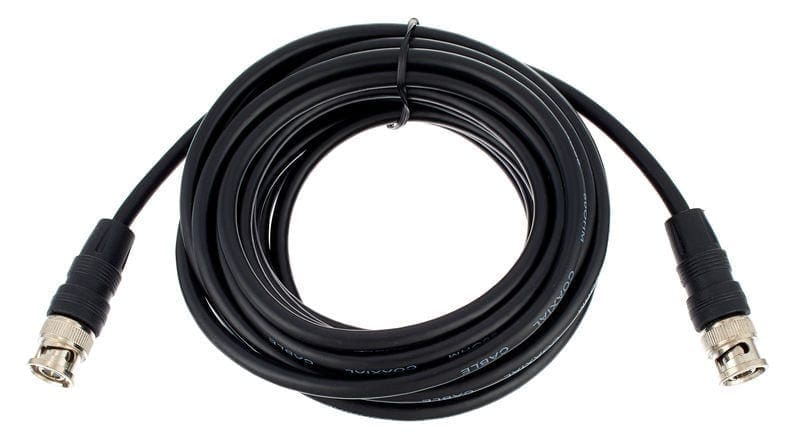
BNC cables are essentially the same type of audio cable used to connect to your cable TV. But here they are utilized for syncing the internal clocks of digital devices. You’ll need to have more than one in your studio though, as two or more cables are needed to do the job.
These types of cables are great for ensuring that there are no unwanted pops or clicking noises in your audio. If your studio is on the smaller side BNC isn’t totally necessary, however, in big studio spaces BNC cables are a necessity.
Gear4Music has a range of BNC cables for sale, and it’s a great point of call in your search for the best cable. The good news is that they provide equipment for both the UK and the USA.
Analog Cables
We’ve covered the basics of balanced and unbalanced analog cables, but we now need to dive a little bit deeper. We already know about these two types of analog cables, but now we will look at the types of audio-level signals that they transfer.
First up there’s balanced line level. It represents the standard signal strength used with all pro audio equipment.
Next up we’ve got the unbalanced instrument level. These signals come from electric instruments, such as electric guitars, and are sent through a standard cable but then enhanced to line level.
The mic level is balanced and the signals are sent through a standard cable, but then enhanced to line level using mic preamps.
How To Tell Whether Your Kit Is Balanced

It’s important to know whether your kit is balanced or unbalanced; this way you will be able to make informed decisions on what cable is best for which particular recording session. If you misuse it, the worst-case scenario is that you can damage your kit. You can also waste your own time by creating audio with distracting interference.
Having a balanced kit will automatically ensure better recording quality, but if that’s not an option for you right now just make sure that your unbalanced cables are as short as they can be. The ideal length is roughly 1.8 meters, to ensure you achieve the best sound quality that you can.
It’s so easy to know if your kit is balanced, either simply check the instructions it came with or see if it’s got XLR inputs and outputs. On the other hand, your kit is unbalanced if it has RCA inputs and outputs, it’s a guitar or bass instrument or it possesses ¼ inch mono or stereo system outputs.
Different Types Of Analog Cables
Let’s take a closer look at the balanced types of must-have analog cables for your studio:
- XLR Male: this cable is utilized to connect a variety of equipment from a PA system, mics, speakers, and instruments with XLR. These types of cables are always balanced, meaning that the cables can be comfortably long without providing any unwanted noise interference or background noise and low latency times.
- XLR Female: the difference between the XLR Male and the XLR Female is that the male connects to hardware inputs and the female connects to hardware outputs. The XLR Female has 3 holes, compared to the Male XLR’s 3 pins.
Unbalanced Analog Cables
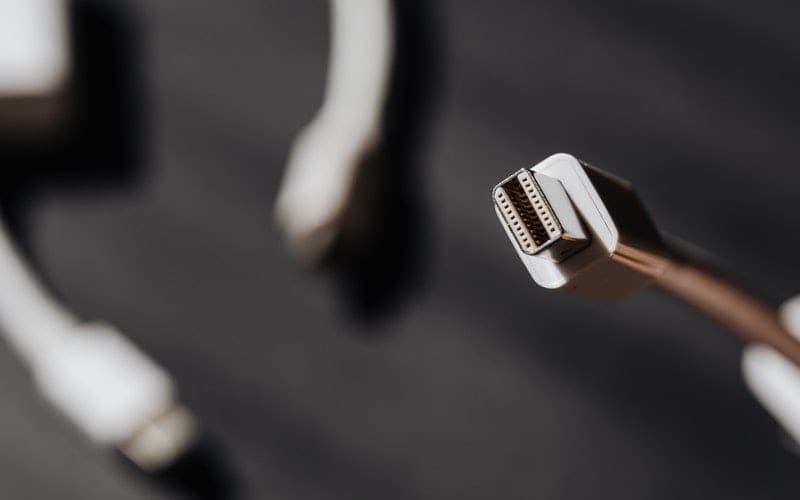
So what are the unbalanced analogue cables that you need in your studio?
TRS
Now, TRS Cables can be both balanced and unbalanced – it all relies on how you utilize them. These types of cables have three different surfaces: tip, ring, and sleeve – hence the name! They are made up of one ground wire and two-conductor wires.
If you use two TRS cables in conjunction with each other, using a different one for the right and left channels, they work together to cancel any interference and boost your signal. However, if you don’t separate the cables they will be unbalanced, due to them both boosting the signal and opening the audio up to unwanted interference.
A great TRS cable option is the Roland Balanced Interconnect Cable. It’s made up of copper wiring and boasts high-density spiral shielding. It’s ideal for signal transmission for a range of instruments and equipment. You can purchase this product for just £15.00 from Gears4Music. It provides professional quality for a very reasonable price.
TS Audio Cables
These types of cables are always unbalanced as they are made up of just one wire. They are perfect for a kit that possesses a mono output, such as drum machines and guitars.
You should make sure that you use the cables at the shortest length possible though, to lessen the chance of them picking up any unwanted background noise.
RCA Audio Cables

RCA cables can also be known as phono plugs, and they are always unbalanced thanks to their one ground cable and one conductor cable. The connectors are colored red for the right channel and white for the left channel.
They are best used for connecting CDJs and turntables, so they are ideal if you’re a DJ. Again, remember to make sure the cables are as short as you can make them to ensure you achieve the best sound quality and latency possible.
The Amazon Basics 2-Male to 2-Male RCA Audio Cable is a steal at just £6.29. It doesn’t skimp on quality though, as the gold-plated connectors mean that you can guarantee your cable will be around for a long time, but you also have the extra reassurance of a one-year warranty from Amazon.
You have three different length options to choose from 4, 8, and 15 feet according to what best suits your needs. The audio cancels out any interference and just leaves you with consistent pro audio.
Conclusion Of Audio Cables
So there we have it, a detailed look at the audio cables that you’ll need and where’s best to purchase them.
It’s always best to keep an eye out for any deals and offers that might be around, so we advise you to do your research before you buy.
Remember, audio cables are an important part of your studio and their significance should not be overlooked. After all, plugging everything in is the first step in creating beautiful music!









